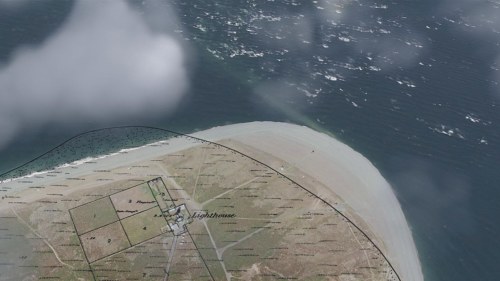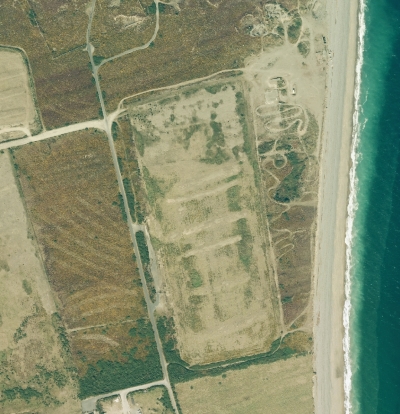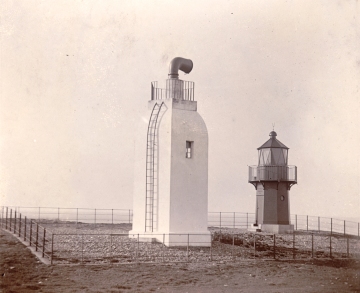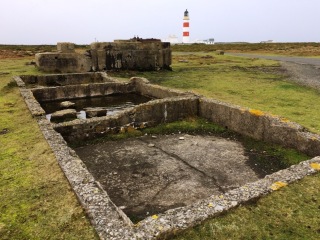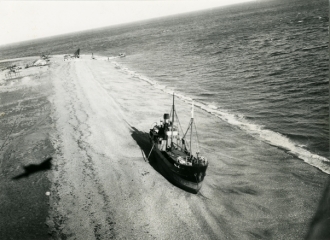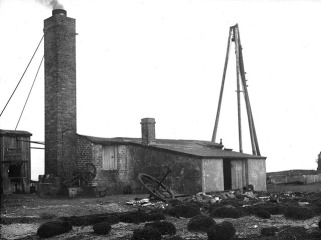The Point of Ayre is the Island’s most northerly tip and when you stand here you are closer to Scotland (14 miles) than you are to Douglas.
Most of the Island’s northern plain is made up from sand and gravel that was deposited here during and after the last Ice Age. Today, companies are extracting this material for the Island’s building trade.
The remaining excavation pits have been used for dumping the Island’s waste and, more recently, as a haven for some of the Island’s wildlife.
The huge amount of stones at the Point have been dragged up over centuries from the beaches on the west coast. Coastal erosion and prevailing winds and tides mean that the stones work their way up to the point and are deposited here, whilst the sand carries on out to sea and forms huge banks just under the surface. These are marked by buoys which you can see from the beach.
The remarkable thing about the Point is that it is moving. When the Lighthouse was constructed in 1818 it was much nearer to the sea than it is now.
Some 70 years later it was found necessary to build an additional small light tower some 250 yards seaward from the main tower. Due to continuous gravel build-up, this tower was moved a further 250ft seaward in 1951 and now stands out on the gravel bank. This small light is known as The Winkie.
Although the build up of gravel is slow, there is an easy way to see just how much the Point has moved in the last 160 years. Taking an aerial photograph of the Point today, its changed position is easily seen by overlaying the outline of the Point as recorded by the 1860s Ordnance Survey. It is quite clearly moving to the south east!
The lighthouse was built by the Northern Lighthouse Board’s chief engineer, Robert Stevenson, and its construction was a major engineering challenge on the Isle of Man of 1818 with its poor roads and slow communication. When the keepers first arrived the building wasn’t finished, and they had to lodge with a farmer two miles away.
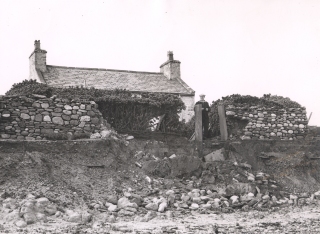 Eventually impressive foghorns were installed, first one, and then a second one. In favourable wind conditions they could be heard at the Mull of Galloway, 26 miles away. Powered by Kelvin engines they used compressed air to give a periodic blast which echoed out across the sea in a most haunting way.
Eventually impressive foghorns were installed, first one, and then a second one. In favourable wind conditions they could be heard at the Mull of Galloway, 26 miles away. Powered by Kelvin engines they used compressed air to give a periodic blast which echoed out across the sea in a most haunting way.
Along with the movement of the Point itself, coastal erosion is an increasing problem. Just south of the Point at Cranstal, erosion has meant the loss of several dwellings in the past 50 years.
Just a few hundred yards south of the Point is a major landfill site. Wright’s Pit East, as it was named, was in use until the early years of this century until the Island’s incinerator came on line. Since then coastal erosion has meant that the edge of the site is getting ever closer to the sea. At some point the buried rubbish will make an unwelcome reappearance on the beaches and presumably be carried around the Irish Sea unless drastic measures to prevent this are taken in the next few years.
The natural resources of the Point of Ayre have long been an important asset for the Island. Sand and gravel extraction has been undertaken since the 19th century and in the last years of that century, whilst prospecting for coal, a huge brine lake was discovered deep below ground. This solution of concentrated salt water was so pure that it was pumped down to Ramsey to be evaporated for use as table salt and as a preservative for the thriving herring industry. Parts of the original pipe that carried the brine can still be seen on the beach near Cranstal.
The flowering heathland, nesting birds, diving gannets and dramatic sea currents all combine to make the Point of Ayre a truly remarkable landscape.
To learn more about the geology of the northern plain, follow this link to the Manx Geological Survey: http://manxgeology.com/glacial/
Don't forget to bookmark this page in case you want to view it again later.


